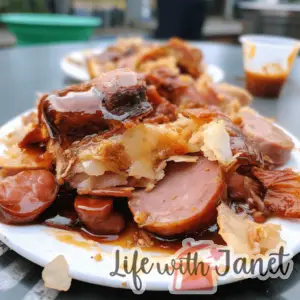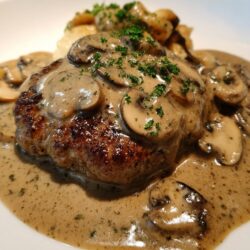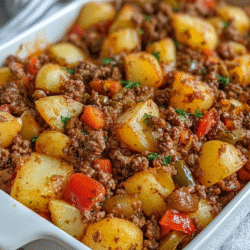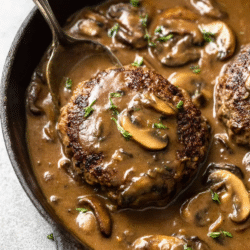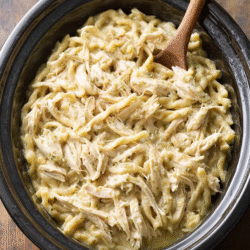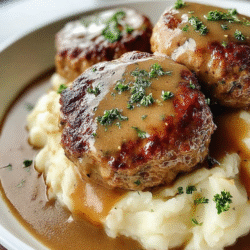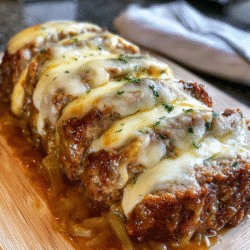What Exactly is Hog Maw and Why is it Considered Soul Food?
Oh, Hog Maw! The dish that dares to venture where few have dared before—into the edible realm of pig stomachs. No, it’s not a typo. The dish centers around a pig’s stomach that’s generously filled with a concoction of meat and vegetables. Why is it considered soul food, you ask? Because it goes beyond mere sustenance; it’s about history, heritage, and making do with what you have.
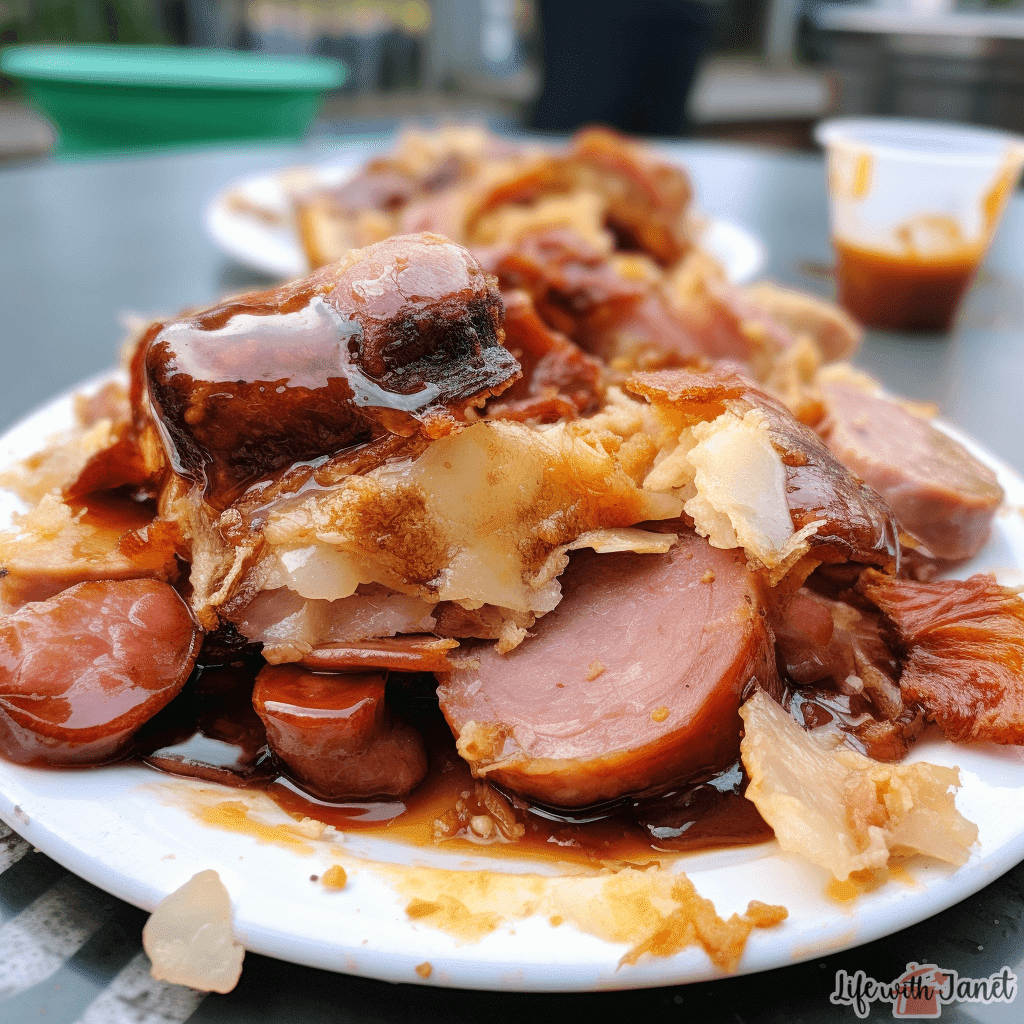
In culinary worlds defined by truffles and wagyu beef, Hog Maw seems like an anomaly. Yet, it’s this very difference that makes it special. In essence, Hog Maw is a walking testament to the adage, “Waste not, want not.” Every part of the pig can be utilized, from snout to tail. You get a sense of frugality and cleverness by cooking a dish that others might overlook or discard.
The tradition of eating Hog Maw originated from German cuisine but found its way into African American homes, establishing itself as a staple of soul food. It carries with it the weight of history—of making do in lean times, of community gatherings, and of familial bonds.
The meat-stuffed pig stomach makes for a hearty, rich dish that fills you up and feeds your soul. A sprinkle of spices here, a dash of love there, and you’ve got yourself a wholesome meal. To many, it’s more than just food; it’s an experience that speaks to cultural history and family traditions.
Now, if you’ve made it this far into the article and you’re not intrigued—if not downright enamored—with Hog Maw, you probably haven’t given this unassuming dish its fair shot. So the next time you find yourself pondering whether to take the culinary plunge, remember: this dish has soul.
For an exciting twist to your Hog Maw dish, consider adding some smoked Polish sausage. The flavor can be a great complement, and if you’re wondering how to perfectly prepare the sausage, you’ll find all the details you need in this guide on fried potatoes, onions, and smoked Polish sausage.
How Do You Properly Clean a Pig’s Stomach for Hog Maw?
Cleaning a pig’s stomach might sound like a Herculean task, but it’s one of those things where patience is your best friend. Take your time, roll up those sleeves, and don’t skimp on this critical prelude to your Hog Maw culinary experience.
Firstly, you’ve got to get your pig stomachs from a reputable butcher. Don’t cut corners here; quality matters. Once you’re home, the first act on your cleaning stage involves a bowl, water, and your hands. Rinse the stomach under cool running water, removing visible debris and fat. A sharp knife or kitchen scissors can help snip off stubborn bits.
Enter the salt! The interior lining of the stomach will be slimy, and salt is the perfect abrasive agent to handle this. Rubbing salt in and around the stomach helps remove the slime and any lingering fat or debris. Rinse again under running water to wash away the salt and other undesirables.
Now for the grand finale: cornstarch. I know it sounds strange, but cornstarch can be an incredible cleaning agent. It’s especially good at tackling odors. Rub the stomach with a generous handful, focusing on the interior lining, then rinse thoroughly in clean water.
If the process seems daunting, just think of it as prepping any other meat—only this one comes with a unique texture and shape. Once your pig stomach is squeaky clean, it’s ready for the flavors you’ll infuse it with, the meats you’ll stuff it with, and the cooking process that will transform it into an unforgettable meal.
Take it from me; the more attention you give to cleaning, the better the final dish will be. You don’t want any unwelcome surprises ruining your hard work, do you?
What Are Some Alternative Ingredients That Can Be Used in Hog Maw?
Ah, the beauty of cooking lies in its flexibility, doesn’t it? Hog Maw is no exception to this rule. While the traditional recipe calls for a specific set of ingredients, who’s to say you can’t stray a little and still create something wonderful? After all, the kitchen is your playground.
The typical Hog Maw recipe calls for potatoes, a staple for filling and combining flavors. But have you considered using yuca or true yams instead? These tubers can offer a new layer of texture and taste to your dish.
On the seasoning front, onion, celery, and parsley are your usual suspects. But what if you threw in some curry powder or Creole seasoning? You’ll bring an entirely different aroma and spice profile into play, lending a unique twist to this classic dish.
Sausage choices also offer a realm of possibilities. The recipe traditionally employs pork, Italian, and smoked sausages like Andouille. If you want to shake things up a bit, why not try some Cajun shrimp sausage? For inspiration on incorporating this, check out this delicious Cajun shrimp pasta with sausage recipe.
Whatever you do, remember that the spirit of Hog Maw is about making the most out of what you’ve got. So go ahead, get creative! Perhaps, add some cheese? Or how about a dash of wine for acidity and depth? The possibilities are as limitless as your imagination.
The key here is to maintain the soul of the dish while stamping your personality onto it. So play around, and don’t be afraid to venture outside the recipe box. Your taste buds will thank you.
Can You Freeze Hog Maw and How Long Does It Last in the Freezer?
Let’s cut to the chase—can you freeze Hog Maw? Absolutely! One of the many advantages of this soulful dish is its freezer-friendly nature. If you’ve gone through the labor of love that is cooking Hog Maw, freezing the leftovers or even parboiling and freezing the cleaned stomachs can save you a lot of time down the line.
Parboil the clean hog maws for about 5-10 minutes. Once they’ve cooled down, store them in a freezer bag. They can last in your freezer for up to one or two months. Remember to label your bag with the date to avoid any freezer-burnt surprises later on.
But what about the cooked Hog Maw? Well, if you happen to have any leftovers—which, given how delicious this dish is, could be a big if—you can freeze them too. The process is fairly straightforward. Let the cooked Hog Maw cool down to room temperature, then cut it into portions that are easy to defrost and reheat.
Once you’ve portioned out the dish, wrap each section tightly in plastic wrap. Place the wrapped pieces in a zip-lock bag and remove as much air as possible before sealing. Like with the cleaned stomachs, don’t forget to label your bag with the date.
Now, your culinary masterpiece is good to go in the freezer for up to 2-3 months. When you’re ready to eat it again, just reheat it directly from the freezer in a preheated oven, or let it thaw overnight in the fridge before reheating. Simple, convenient, and still utterly delicious.
How Does Hog Maw Differ from Other Stuffed Meat Dishes?
Hog Maw is distinct; it’s not your average meatloaf or stuffed turkey. The use of a pig’s stomach as both the encasing and one of the main ingredients sets it apart right from the get-go. But the distinctions don’t just end there; oh no, the intricacies run far deeper!
You see, stuffed meat dishes often aim for uniformity in flavor and texture, providing a consistent taste throughout the dish. Hog Maw, in contrast, is like a culinary adventure where each bite could yield something different.
Additionally, the method of preparation varies substantially from other stuffed meat dishes. The pig’s stomach isn’t merely a vessel to hold the stuffing; it’s an active participant in the flavor profile, soaking up the seasonings and aromatics, and imparting its unique, rich flavor to the stuffing within.
The culture and history surrounding Hog Maw also set it apart. Unlike many other stuffed dishes that come from European traditions, Hog Maw has significant ties to African American soul food. The dish transcends mere eating; it’s about tradition, history, and a sense of community.
Then there’s the versatility. The basic concept of Hog Maw provides a canvas that allows you to paint with a broad palette of flavors and ingredients. For a rich and cheesy variant of your Hog Maw, look no further than this cheese, potato, and smoked sausage casserole for inspiration.
What Side Dishes Go Well with Hog Maw?
Hog Maw is the pièce de résistance on your dinner table. But every star needs a supporting cast, right? So let’s talk about the unsung heroes—side dishes. Choosing the right sides can elevate your Hog Maw dish from good to mind-blowingly awesome.
Traditional Southern sides like collard greens and cornbread can add an extra layer of flavor and texture, creating a cohesive dining experience. If you’re looking for something a bit lighter, a tangy, crisp coleslaw can provide the perfect counterbalance to the richness of the Hog Maw.
Potato salads are also an excellent choice. You already have potatoes inside the Hog Maw, so carrying that flavor to a side dish can create a lovely harmony. Add some mustard or vinegar-based dressings to your potato salad to bring in some acidity and cut through the fatty richness of the Hog Maw.
If you’re aiming for a more cosmopolitan spread, you might consider side dishes like roasted vegetables or a fresh, crisp salad with a zesty vinaigrette. The key here is balance; you want sides that complement but don’t overpower the main event.
Remember, at the end of the day, you know your palate best. So go with what feels right for you, be it classic or unconventional, and let your culinary instincts lead the way.
Hog Maw Recipe
Ingredients
- 2 small pig stomachs meticulously cleaned (all fat removed)
- 2 lbs of pork sausage
- 1 lb of sweet Italian sausage
- 1 lb of smoked sausage sliced into half-inch rounds
- 2 lbs of potatoes peeled and diced into half-inch cubes
- 1 medium onion finely chopped
- 1 celery stalk finely chopped
- Fresh parsley a quarter cup, finely chopped
- Salt and pepper adjusted to your taste
Instructions
- Initial Prep: Cleanse the pig stomachs with cold water until spotless.
- Preheat Oven: Get your oven heating up to 350°F (177°C).
- Chop & Dice: Prepare your veggies and smoked sausage by chopping and dicing them.
- Mingle the Flavors: Mix together the pork and Italian sausages, cubed potatoes, onions, and celery. Add the chopped parsley. Flavor it up with salt and pepper. Introduce the sliced smoked sausages to the mix.
- Stitch It Up: Secure one end of each cleaned pig stomach with toothpicks or cooking twine.
- Stuff It: Now, fill these stomachs with the prepared sausage-veggie mix. Press down as you go; the stomach will expand.
- Final Touches: If the pig stomachs are too long, feel free to trim the excess. Place them in a roasting pan and add a touch of water.
- Baking Time: Cover the pan with foil and bake for about 2.5 to 3 hours. Keep basting every 20 minutes using water or the pan’s juices.
- Golden Finish: For the last 30 minutes, remove the foil and allow the hog maws to turn golden brown.
- Serving: Remove, discard the toothpick or twine, and place your cooked hog maws on a plate. Either slice them into 1-inch thick portions or scoop out the delicious filling.
Notes
- You can pre-boil cleaned hog maws for up to 10 minutes, cool them, and freeze in a bag for future use.
- For chitlin lovers, feel free to chop the hog maws into bite-sized pieces and add them to your chitlin recipe.
- Refrigerate leftovers for up to a couple of days or freeze for up to three months.

